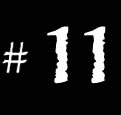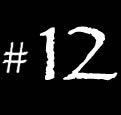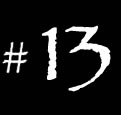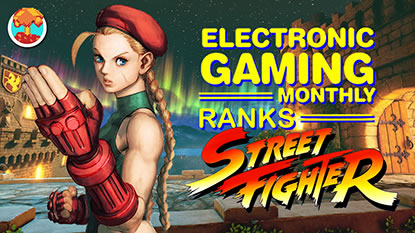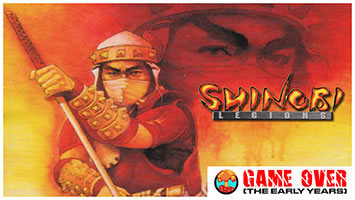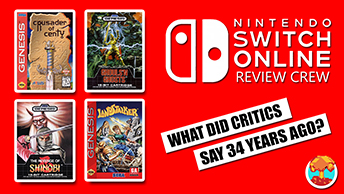- CLASSIC MAGAZINES
- REVIEW CREW
A show recapping what critics thought back
when classic games first came out! - NEXT GENERATION'S BEST & WORST
From the worst 1-star reviews to the best
5-stars can offer, this is Next Generation! - NINTENDO POWER (ARCHIVE)
Experience a variety of shows looking at the
often baffling history of Nintendo Power! - MAGAZINE RETROSPECTIVE
We're looking at the absolutely true history of
some of the most iconic game magazines ever! - SUPER PLAY'S TOP 600
The longest and most ambitious Super NES
countdown on the internet! - THEY SAID WHAT?
Debunking predictions and gossip found
in classic video game magazines! - NEXT GENERATION UNCOVERED
Cyril is back in this spin-off series, featuring the
cover critic review the art of Next Generation! - HARDCORE GAMER MAGAZING (PDF ISSUES)
Download all 36 issues of Hardcore Gamer
Magazine and relive the fun in PDF form!
- REVIEW CREW
- ELECTRONIC GAMING MONTHLY
- ELECTRONIC GAMING MONTHLY RANKS
From Mario to Sonic to Street Fighter, EGM
ranks classic game franchises and consoles! - ELECTRONIC GAMING MONTHLY BEST & WORST
Counting down EGM’s best and worst reviews
going year by year, from 1989 – 2009! - ELECTRONIC GAMING BEST & WORST AWARDS
11-part video series chronicling the ups and
downs of EGM’s Best & Worst Awards!
- ELECTRONIC GAMING MONTHLY RANKS
- GAME HISTORY
- GAME OVER: STORY BREAKDOWNS
Long-running series breaking down game
stories and analyzing their endings! - A BRIEF HISTORY OF GAMING w/ [NAME HERE]
Real history presented in a fun and pithy
format from a variety of game historians! - THE BLACK SHEEP
A series looking back at the black sheep
entries in popular game franchises! - INSTANT EXPERT
Everything you could possibly want to know
about a wide variety of gaming topics! - FREEZE FRAME
When something familiar happens in the games
industry, we're there to take a picture! - I'VE GOT YOUR NUMBER
Learn real video game history through a series
of number-themed episodes, starting at zero! - GREAT MOMENTS IN BAD ACTING
A joyous celebration of some of gaming's
absolute worst voice acting!
- GAME OVER: STORY BREAKDOWNS
- POPULAR SHOWS
- DG NEWS w/ LORNE RISELEY
Newsman Lorne Riseley hosts a regular
series looking at the hottest gaming news! - REVIEW REWIND
Cyril replays a game he reviewed 10+ years
ago to see if he got it right or wrong! - ON-RUNNING FEUDS
Defunct Games' longest-running show, with
editorials, observations and other fun oddities! - DEFUNCT GAMES QUIZ (ARCHIVE)
From online quizzes to game shows, we're
putting your video game knowledge to the test!- QUIZ: ONLINE PASS
Take a weekly quiz to see how well you know
the news and current gaming events! - QUIZ: KNOW THE GAME
One-on-one quiz show where contestants
find out if they actually know classic games! - QUIZ: THE LEADERBOARD
Can you guess the game based on the classic
review? Find out with The Leaderboard!
- QUIZ: ONLINE PASS
- DEFUNCT GAMES VS.
Cyril and the Defunct Games staff isn't afraid
to choose their favorite games and more! - CYRIL READS WORLDS OF POWER
Defunct Games recreates classic game
novelizations through the audio book format!
- DG NEWS w/ LORNE RISELEY
- COMEDY
- GAME EXPECTANCY
How long will your favorite hero live? We crunch
the numbers in this series about dying! - VIDEO GAME ADVICE
Famous game characters answer real personal
advice questions with a humorous slant! - FAKE GAMES: GUERILLA SCRAPBOOK
A long-running series about fake games and
the people who love them (covers included)! - WORST GAME EVER
A contest that attempts to create the worst
video game ever made, complete with covers! - LEVEL 1 STORIES
Literature based on the first stages of some
of your favorite classic video games! - THE COVER CRITIC
One of Defunct Games' earliest shows, Cover
Critic digs up some of the worst box art ever! - COMMERCIAL BREAK
Take a trip through some of the best and
worst video game advertisements of all time! - COMIC BOOK MODS
You've never seen comics like this before.
A curious mix of rewritten video game comics!
- GAME EXPECTANCY
- SERIES ARCHIVE
- NINTENDO SWITCH ONLINE ARCHIVE
A regularly-updated list of every Nintendo
Switch Online release, plus links to review! - PLAYSTATION PLUS CLASSIC ARCHIVE
A comprehensive list of every PlayStation
Plus classic release, including links! - RETRO-BIT PUBLISHING ARCHIVE
A regularly-updated list of every Retro-Bit
game released! - REVIEW MARATHONS w/ ADAM WALLACE
Join critic Adam Wallace as he takes us on a
classic review marathon with different themes!- DEFUNCT GAMES GOLF CLUB
Adam Wallace takes to the links to slice his way
through 72 classic golf game reviews! - 007 IN PIXELS
Adam Wallace takes on the world's greatest spy
as he reviews 15 weeks of James Bond games! - A SALUTE TO VAMPIRES
Adam Wallace is sinking his teeth into a series
covering Castlevania, BloodRayne and more! - CAPCOM'S CURSE
Adam Wallace is celebrating 13 days of Halloween
with a line-up of Capcom's scariest games! - THE FALL OF SUPERMAN
Adam Wallace is a man of steel for playing
some of the absolute worst Superman games! - THE 31 GAMES OF HALLOWEEN
Adam Wallace spends every day of October afraid
as he reviews some of the scariest games ever! - 12 WEEKS OF STAR TREK
Adam Wallace boldly goes where no critic has
gone before in this Star Trek marathon!
- DEFUNCT GAMES GOLF CLUB
- DAYS OF CHRISTMAS (ARCHIVE)
Annual holiday series with themed-episodes
that date all the way back to 2001!- 2015: 30 Ridiculous Retro Rumors
- 2014: 29 Magazines of Christmas
- 2013: 29 Questionable Power-Ups of Christmas
- 2012: 34 Theme Songs of Christmas
- 2011: 32 Game Endings of Christmas
- 2010: 31 Bonus Levels of Christmas
- 2009: 30 Genres of Christmas
- 2008: 29 Controls of Christmas
- 2007: 34 Cliches of Christmas
- 2006: 33 Consoles of Christmas
- 2005: 32 Articles of Christmas
- 2004: 31 Websites of Christmas
- 2003: 29 Issues of Christmas
- 2002: 28 Years of Christmas
- 2001: 33 Days of Christmas
- NINTENDO SWITCH ONLINE ARCHIVE
- REVIEW ARCHIVE
- FULL ARCHIVE
A Salute to Vampires: 13 Days of Blood-Sucking Games
From ghosts and ghouls to zombie invasions, Capcom has been on the forefront of horrifying gamers for more than thirty years. To help get you in the Halloween spirit, Adam Wallace of Cool Media is set to bring you thirteen terrifying days of Capcom reviews, featuring classics like Sweet Home, Killer 7, Maximo vs. Army of Zin, Darkstalkers 3, Devil May Cry and all three Dino Crisis games. New reviews coming every weekday between October 15 and Halloween day. Be afraid, horror junkies, because you are already under Capcom's Curse!
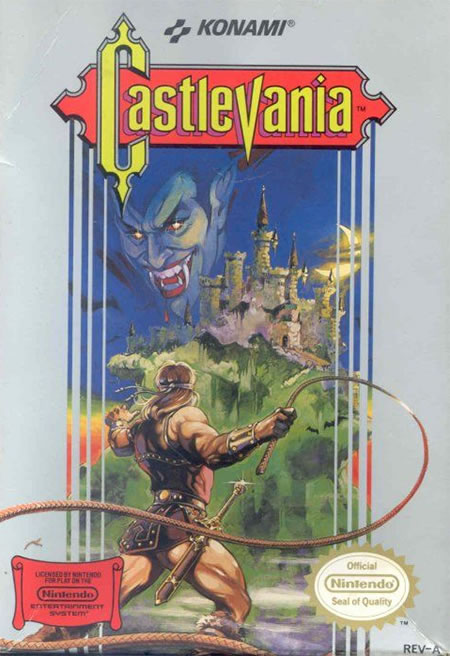
The original Nintendo is one of the most important game consoles in history. It almost single-handedly brought the video game industry back from the dead. While Nintendo's first-party IPs like Super Mario Bros. & Donkey Kong can claim a lot of the credit, the third-parties did their share, too. One of the games that made playing Nintendo a cool pastime was the original Castlevania. However, while many of the games that were popular during the era just don't hold up anymore, Simon Belmont's first mission to destroy Dracula does ... for the most part. Those who started the series with Symphony of the Night or Lords of Shadow would probably be confounded when they take control of Simon. His whip can be strengthened via pick-ups twice, and he can hold one sub-weapon powered by heart pick-ups, but that's it as far as his abilities are concerned. His movements and attacks are very mechanical. He can only jump straight up or in mostly fixed arcs. [READ FULL REVIEW]
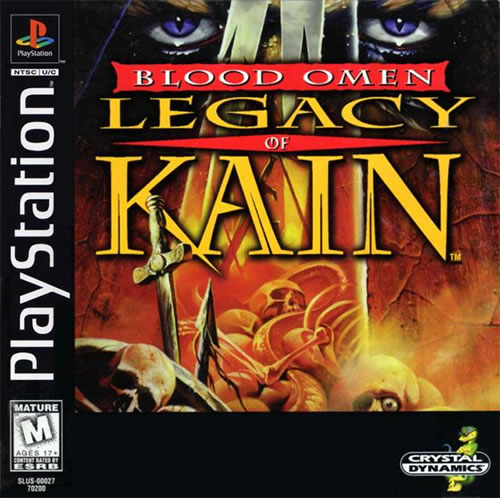
Thanks to the Castlevania franchise, there have been plenty of games that involved humans killing vampires. In fact, humans eliminating vampires is a horror plotline that's existed for hundreds of years. However, it wasn't until the 1980s and 90s that vampires actually started to become the heroes of their stories, mostly thanks to the books of Anne Rice starting with Interview with the Vampire. Silicon Knights, the developers who would later make Eternal Darkness and Too Human, also decided to make a vampire the hero with Blood Omen, the first of what would be five games in the Legacy of Kain series. While intriguing, the series was off to a rough start. [READ FULL REVIEW]
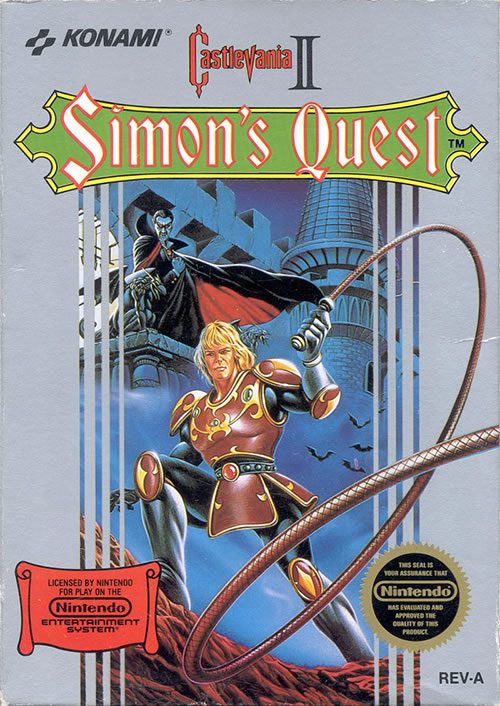
Despite its start as a basic platform series revolving around horror movie cliches, the Castlevania series came into its own in the 90s and early 2000s with its shift to a Metroid-style adventure. The games created in that style were some of the greatest games I've ever played, especially Symphony of the Night which is my favorite game of all time. That's especially amazing considering the first attempt at such a style, Castlevania II: Simon's Quest, was as rough as getting lashed by Simon's whip. The story picks up where the original's very basic plot left off. After Simon Belmont successfully killed Dracula, his bones scattered all over Transylvania. To prevent the possibility of a later return, Simon goes on a quest to find his bones and destroy them. When you think about it, the plot doesn't make much sense. You'd think his bones would've been destroyed right off the bat. However, it does give a reason for the exploration that'll be the crux of the game. [READ FULL REVIEW]
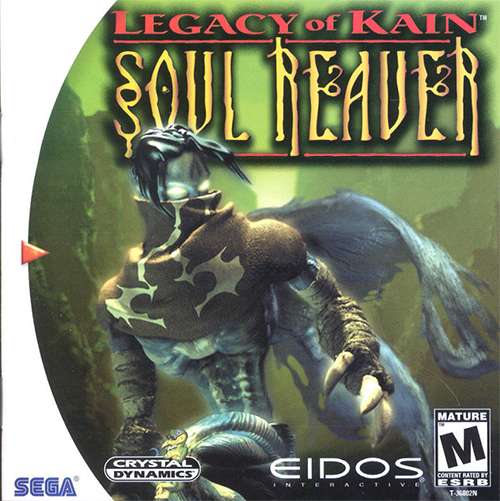
Many games from the dawn of polygons, while great at the time, don't hold up now more than twenty years later. Even though gamers who had been around at the time can still enjoy them, they can be a hard sell for newer audiences. When people talk about which games from the original Playstation are still worth playing, I'm surprised that no one ever mentions the second Legacy of Kain game, Soul Reaver. It's still a fantastic adventure, and the Dreamcast version is an even better version of it. Soul Reaver picks up 1000 years after the bad ending of Blood Omen. After Kain refused to martyr himself to restore Nosgoth's balance, the world fell into decay, and he set himself as the god of the dying land. [READ FULL REVIEW]
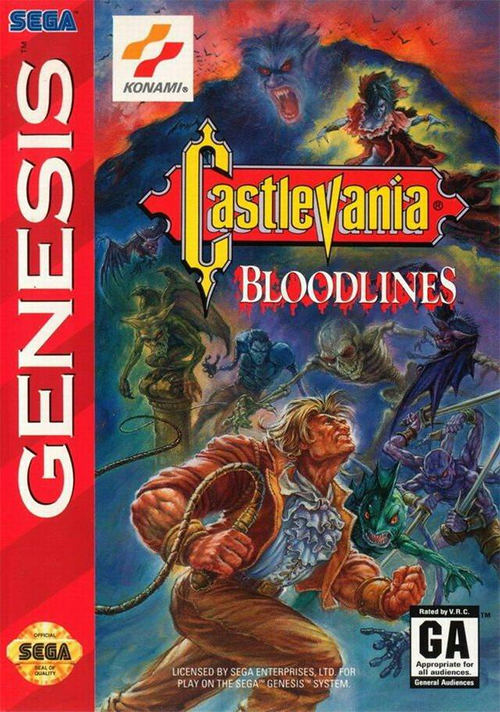
The original Castlevania trilogy on the original Nintendo was pretty good although the mechanics tended to get in the way more often than preferable. The fourth game on Super Nintendo resolved the mechanical issues to become one of the best games in the series. Sega fans didn't get to enjoy the series at all until 1994 due to Nintendo's monopolistic policies regarding third-parties; the closest Sega got was the pretty good blatant rip-off Vampire: Master of Darkness. However, in 1994, a true blue Castlevania game made it to the Genesis. Castlevania: Bloodlines (or Castlevania: The New Generation if you're in Europe) is the only taste of the series Sega fans would get (except for those Japanese Saturn owners who could enjoy Symphony of the Night). Fortunately, it was a very tasty morsel. Like most of the prior games in the series, the plot is very basic, just another trek to put down a recently resurrected Dracula. [READ FULL REVIEW]
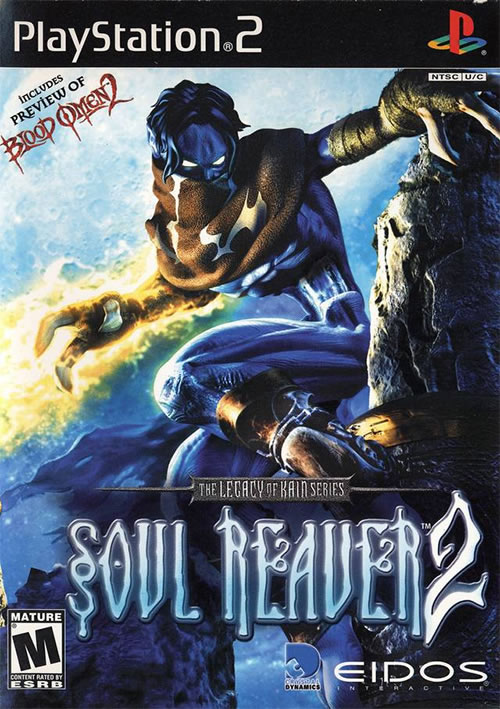
With Soul Reaver's cliffhanger ending, a follow-up was outright demanded. Soul Reaver 2 had plenty of hype in 2001. Not only was it going to continue the story of vampire-turned-wraith Raziel, but it was also going to take advantage of the then-recently released Playstation 2 to show Nosgoth in all its glory. While it did succeed on those points, it faltered in others. Soul Reaver 2 picks up right where the previous game left off. Before Raziel could kill him, Kain escapes through a time portal built by Moebius, leader of an army of vampire hunters. Raziel pursues and finds himself back in Nosgoth before the events of Blood Omen. Tired of being manipulated by Kain and the Elder God, Raziel goes on a search for information on his past before becoming one of Kain's lieutenants. The story is overloaded. Time travel stories are hard to get right at the best of times. [READ FULL REVIEW]
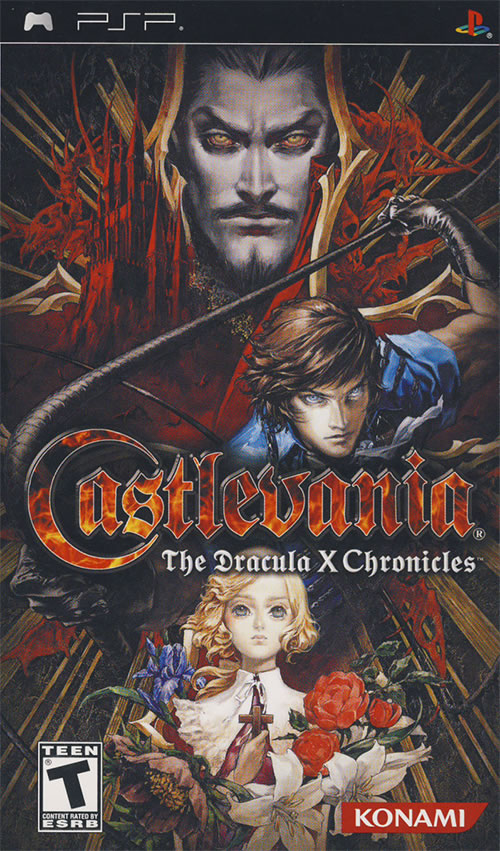
I mentioned before when talking about Chakan: The Forever Man that excessive difficulty can actually hurt a game. It almost doesn't matter how much care and effort went into a game; if it's too hard, no one will see all the work that went into it, anyway. Be clear that I am not a pansy when it comes to difficulty. I've logged plenty of miles in Ninja Gaiden and Final Doom, and those games are certainly no cakewalks. To be fair, Castlevania: The Dracula X Chronicles is a remake that's a little easier than the original release, but that's like saying fighting a Bengal tiger is easier with a butter knife than with a toothpick. The Dracula X Chronicles is a remake of Rondo of Blood which, at the time, was only available on the Japanese PC Engine-CD. Unlike most of the straight platforming games that came before, the story here is more significant. The latest member of the Belmont clan, Richter, heads to Dracula's castle as his beloved Annette was kidnapped by the dark priest Shaft to be used as a sacrifice. Cinematics are sprinkled throughout the game, and the stronger plot does make this one more interesting than most of the games that came before. [READ FULL REVIEW]
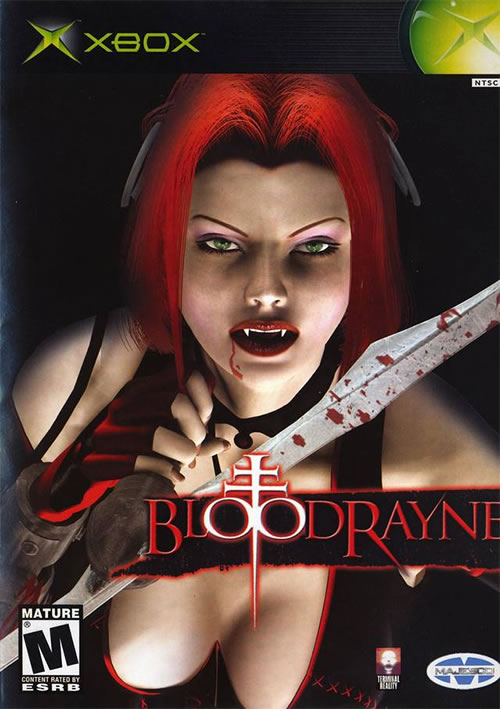
I amazed that vampire-human hybrids known as dhampir don't feature in more stories. Creatures that are torn between their human souls and their vampiric bloodthirst could provide a wealth of dramatic potential. However, until 2002, the only really big examples of dhampir protagonists were Blade from the Marvel comics and movies and Alucard from Castlevania: Symphony of the Night. Then Majesco and Terminal Reality tried to provide one of their own with BloodRayne. Looking at the first game, they shouldn't have bothered. The titular character is a dhampir in service to the Brimstone Society, an organization that hunts monsters. When mutations start to turn the people in the Louisiana bayou into freaks in the 1930s, Rayne is sent to investigate. The trail of the disease leads her to a secret group within the Nazi regime. The plot is just okay. Its biggest drawback is the generally poor voice acting. [READ FULL REVIEW]
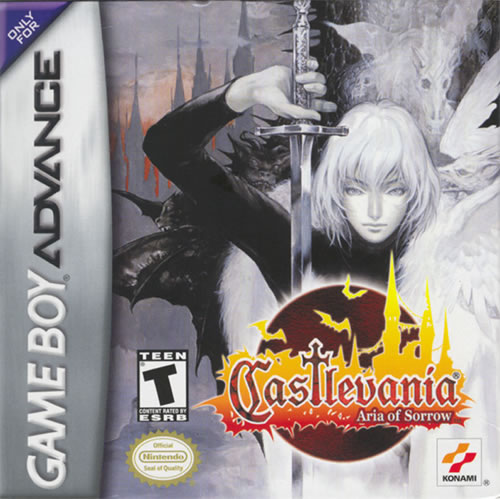
Symphony of the Night changed everything for the Castlevania franchise. Mixing light RPG mechanics with Metroid-style exploration spelled the end for the classic linear games. The only Castlevania games of the classic style that released after that masterpiece were re-releases and remakes like Castlevania Chronicles and Dracula X Chronicles. The Nintendo portables became a breeding ground for "Metroidvania" entries. The Game Boy Advance, DS, and 3DS got, in total, seven games that attempted to recapture the magic of Symphony of the Night. Quality of those games varies, but the third attempt Aria of Sorrow came the closest to nailing it. [READ FULL REVIEW]
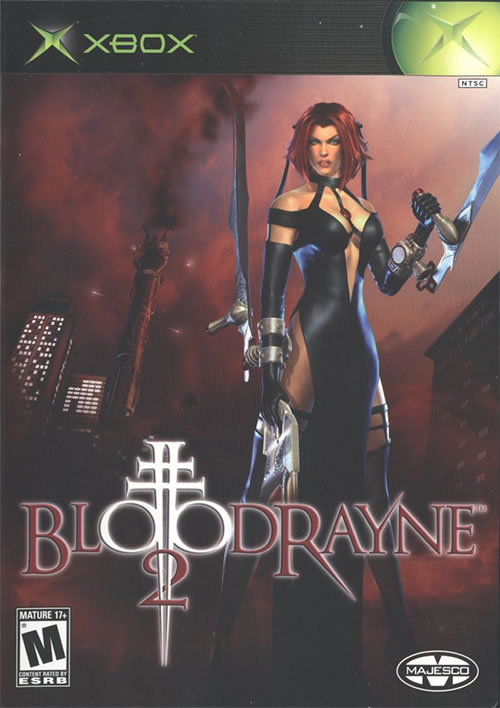
The original BloodRayne provided an interesting character and a piss poor game. However, it was successful enough to give Terminal Reality the greenlight to make another one. BloodRayne 2 did fix a lot of the problems the first game had. It's certainly a better game than the first one, but Rayne is still far from the A-list status of Castlevania or Legacy of Kain. Those looking forward to sucking blood from the throats of Nazis again would be disappointed. The game picks up in the present day. Rayne is still giving her services to the Brimstone Society but only out of convenience. Her mission is more personal. After defeating her vampire father Kagan in the first game, a cult built up around him with Rayne's half-siblings as figureheads. Rayne's mission is to bring down the cult. While the plot is simpler and more generic than in the first game, the writing and dialog have improved. [READ FULL REVIEW]
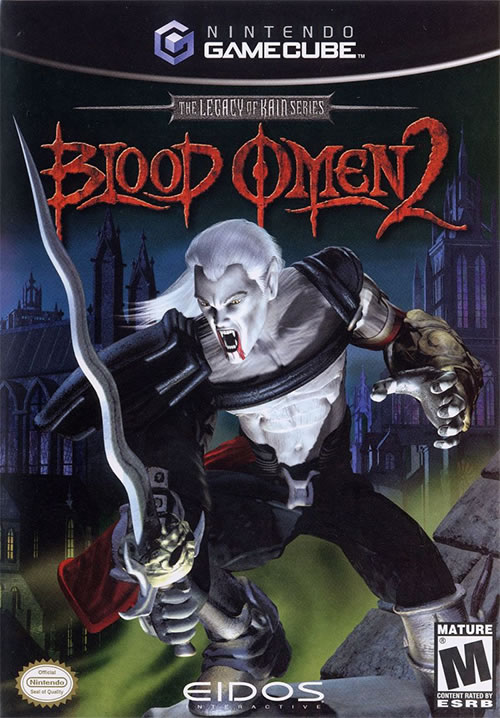
The first three Legacy of Kain games were very much adventure games which focused much more on story, exploration, and puzzle solving than on the fighting. The combat, while enjoyable, was never the crux of the game for them. Blood Omen 2 is the exact opposite, where the combat takes priority over everything else. This makes it a disposable entry in the series, but at least I still got a kick out of it. I guess it makes sense that this is the only Kain game to go to a Nintendo console since no previous knowledge of the series is required to know what's going on. A couple of centuries after Kain refused to martyr himself, he built an army to take over Nosgoth. However, the Sarafan, a cult of vampire-killers, and their powerful leader simply known as the Sarafan Lord strike Kain down and steal the Soul Reaver, Kain's demonic sword. Kain reawakens 200 years later in the city of Meridian by the few survivors of the Sarafan attacks. [READ FULL REVIEW]
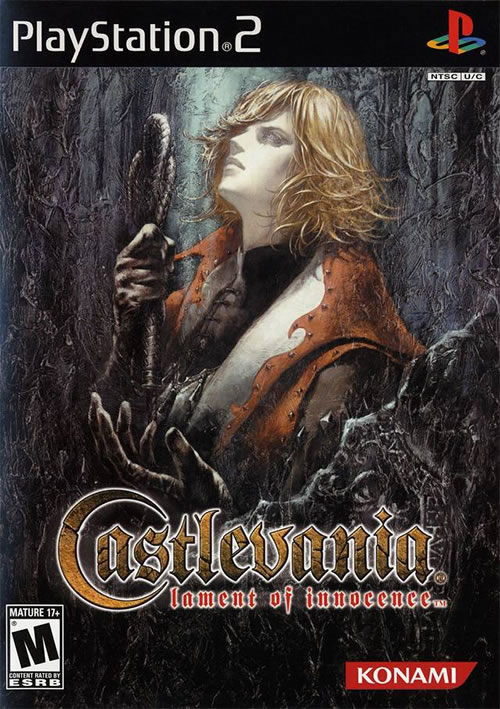
Of all the classic franchises that attempted the jump to 3D, few have had as many problems as Castlevania. The first PlayStation 2 entry Lament of Innocence was the first completed attempt at a 3D game in the series since the two games that went to the Nintendo 64. Since ripping off Metroid wouldn't work for a 3D installment, Konami decided to rip off another game that was already a success on the system, Capcom's Devil May Cry. While not a bad idea in theory, it left plenty to be desired in practice. Lament of Innocence brings the focus back to the Belmont Clan of vampire hunters. Leon Belmont is a Crusader whose betrothed Sara is kidnapped and brought to Dracula's castle. After trying and failing to get the Church's assistance, Leon heads to the castle alone. He is stopped by a former vampire hunter named Rinaldo who gives him a whip and aid in his quest. [READ FULL REVIEW]
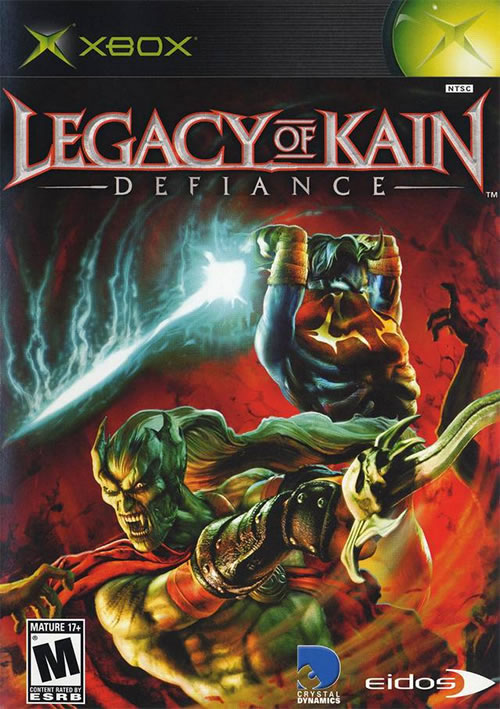
The first four Legacy of Kain games were up and down in terms of quality. The games also kept a sharp divide between the wannabe vampire lord Kain and his servant-turned-wraith Raziel. The fifth (and, it turns out, final) game Defiance was to bring the two together and bring an end to Raziel's story. While this game did go for the gold, it just couldn't stick the landing. The plot of this game assumes that you know everything that happened in Soul Reaver 2; so, I might as well not bother with a spoiler alert. The chapter-based narrative shifts between the two protagonists. Kain is in pursuit of the master manipulator Moebius who engineered everything that happened to him since the beginning of Blood Omen. Raziel is rebelling against the Elder God that turned him into the soul-sucking wraith he became since he discovered the master plan to wipe out all vampires. Both plots are told extremely well. [READ FULL REVIEW]
HOME |
CONTACT |
NOW HIRING |
WHAT IS DEFUNCT GAMES? |
NINTENDO SWITCH ONLINE |
RETRO-BIT PUBLISHING
Retro-Bit |
Switch Planet |
The Halcyon Show |
Same Name, Different Game |
Dragnix |
Press the Buttons
Game Zone Online | Hardcore Gamer | The Dreamcast Junkyard | Video Game Blogger
Dr Strife | Games For Lunch | Mondo Cool Cast | Boxed Pixels | Sega CD Universe | Gaming Trend
Game Zone Online | Hardcore Gamer | The Dreamcast Junkyard | Video Game Blogger
Dr Strife | Games For Lunch | Mondo Cool Cast | Boxed Pixels | Sega CD Universe | Gaming Trend
Copyright © 2001-2025 Defunct Games
All rights reserved. All trademarks are properties of their respective owners.
All rights reserved. All trademarks are properties of their respective owners.

















